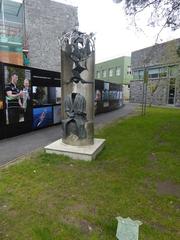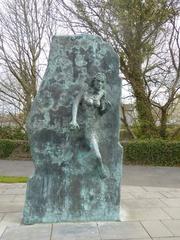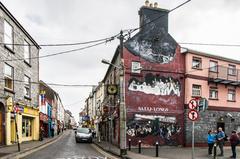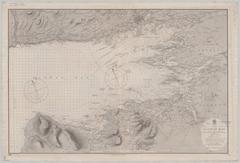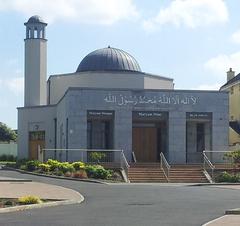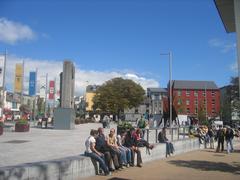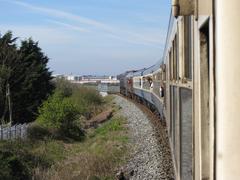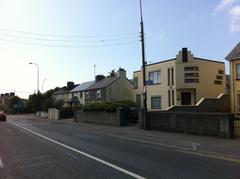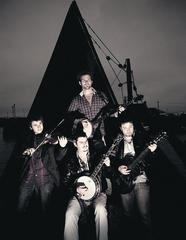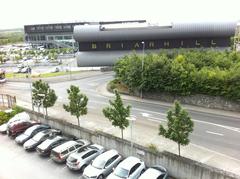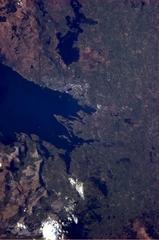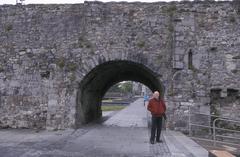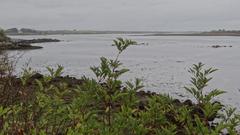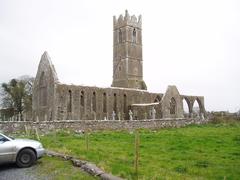
Comprehensive Guide to Visiting Galway, County Galway, Republic of Ireland
Date: 14/08/2024
A Captivating Introduction
Welcome to Galway, the jewel of the west coast of Ireland, where ancient history, vibrant culture, and natural beauty converge to create an unforgettable experience. Known fondly as the ‘City of Tribes,’ Galway’s story stretches back to 5000 BC when early inhabitants feasted on seafood along its shores. This rich tapestry of history is woven from Celtic artistry, monastic influence, medieval trade, and the rise and fall of ancient kingdoms (Galway Tourism). Picture yourself strolling down cobblestone streets where the echoes of traditional Irish music fill the air, or standing on the wind-swept cliffs of the Aran Islands, taking in the breathtaking seascape. Whether you’re a history buff, a festival lover, or a culinary adventurer, Galway offers something for everyone. Let’s dive into this comprehensive guide and uncover the hidden gems, local secrets, and must-visit attractions that make Galway a unique and enchanting destination.
Table of Contents
- Galway: The City of Tribes and Tales
- Cultural Significance
- Attractions and Activities
Galway: The City of Tribes and Tales
Early Inhabitants and Prehistoric Times
Around 5000 BC, the first inhabitants of Galway were enjoying seafood by the shore, leaving behind shell middens as evidence of their diet. Fast forward to 200 BC, and the La Tène Celts from Switzerland left their artistic mark on the Turoe Stone near Loughrea. This ancient artifact is a must-see for anyone curious about Galway’s Celtic roots (Galway Tourism).
Formation of the County and Early Kingdoms
Before County Galway was officially recognized in 1569 AD, it was a patchwork of ancient kingdoms like Aidhne, Uí Maine, and Conmhaícne Mara. Imagine a Game of Thrones scenario with local chieftains vying for power (Wikipedia).
Arrival of Christianity and Monastic Influence
Christianity brought a wave of monasteries, which became the historical record keepers of Galway. Saints like Saint Enda and St. Columcille were the influencers of their time, spreading the Christian faith across the region (Galway Tourism).
Medieval Period and the Tribes of Galway
Founded around a fortification built by the King of Connacht in 1124, Galway blossomed into a bustling trading port controlled by the Tribes of Galway. These merchant families had strong ties with Spain and Portugal, making Galway a cosmopolitan hub (Britannica).
English Conquest and Decline
The English conquest brought about a power shift with 14 merchant families dominating the city, earning it the nickname “City of Tribes.”
Cultural Significance
Welcome to the City of Tribes!
Galway, affectionately known as the “City of Tribes,” is a treasure trove of history, culture, and unmissable experiences. Picture this: cobblestone streets echoing with traditional Irish music, medieval walls whispering tales of old, and festivals that make every day feel like a celebration. Intrigued? Let’s dive in!
A Stroll Through Time
Galway’s story begins in the 12th century with the Anglo-Norman de Burgo family. But it was the 14 merchant families, the Tribes of Galway, who left an indelible mark on the city’s soul. Their legacy lives on in medieval structures like Lynch’s Castle and the city walls (Discover Ireland).
The Latin Quarter: Where History Meets Hip
Welcome to the Latin Quarter, the beating heart of Galway’s cultural scene. Here, cobblestone streets and medieval buildings blend seamlessly with a vibrant arts scene. Don’t miss the Spanish Arch or a stroll down Quay Street, where the air is thick with the sounds of traditional Irish tunes. It’s a feast for the senses! (Ireland Before You Die)
Festival Fever
Galway loves a good party, and its festivals are legendary. From the Galway International Arts Festival to the Cúirt International Festival of Literature, there’s always something happening. And for seafood lovers, the Galway International Oyster Festival is a must (Two Wandering Soles).
Tunes and Taps: Traditional Irish Music and Dance
Music and dance are the lifeblood of Galway. Whether it’s a spontaneous session in a local pub or a grand performance at the Galway Arts Festival, the rhythm of traditional Irish tunes and the energy of a ceilidh will sweep you off your feet (Galway Tourism).
Gaelic Culture in the Gaeltacht
Venture west to the Connemara Gaeltacht, where the Irish language (Gaeilge) is alive and well. This area is a living museum of Gaelic culture, with the Aran Islands offering a glimpse into Ireland’s past (Discover Ireland).
Learning and Faith
Galway’s educational and religious heritage is equally rich. St. Nicholas’ Collegiate Church, dating back to the 14th century, is still in use today. The National University of Ireland, Galway, established in 1845, continues to be a beacon of learning (Discover Ireland).
The Gaelic Games
Gaelic sports like hurling and Gaelic football are more than just games in Galway—they’re a way of life. Catch a match if you can, and feel the passion that sweeps through the community (Galway Tourism).
A Culinary Journey
Galway’s food scene is a delicious blend of tradition and innovation. From the famed Galway International Oyster Festival to bustling farmers’ markets, there’s something to tantalize every palate (Two Wandering Soles).
Nature’s Masterpieces
Galway’s natural beauty is its own spectacle. The Cliffs of Moher and the Aran Islands offer breathtaking views and rich history (The Planet D).
Insider’s Tips
- Best Time to Visit: Summer is perfect for warm weather and buzzing festivals, but winter has the enchanting Galway Christmas Market.
- Duration: Plan for at least 2-3 days in the city, with extra time for the Connemara region.
- Accommodation: Book early if visiting during festivals.
- Local Etiquette: When buying a Claddagh ring, tradition says it should be a gift to avoid bad luck (The World Pursuit).
Attractions and Activities
Historical Sites
Dunguaire Castle
Imagine stepping into a postcard—Dunguaire Castle, near the charming fishing village of Kinvara, is exactly that. This 16th-century tower house is perched gracefully on the shores of Galway Bay and is one of Ireland’s most photographed castles (Ireland.com).
Thoor Ballylee
Ever wanted to peek into the world of a poet? Thoor Ballylee, a 15th-century tower house, was the home of the illustrious W.B. Yeats. This restored tower now serves as a museum dedicated to Yeats’ life and work (Ireland.com).
Natural Attractions
Connemara National Park
Picture this: 3,000 hectares of mountains, bogs, grasslands, and woodlands. Connemara National Park is a paradise for hikers and nature enthusiasts alike. Whether you’re in the mood for a gentle stroll or a challenging hike up Diamond Hill, the park’s diverse wildlife will keep you company (Ireland.com).
Killary Harbour
Ireland’s only fjord, Killary Harbour, stretches 16 kilometers from the Atlantic Ocean into the heart of Connemara. Surrounded by dramatic mountains, it’s a prime spot for boat tours, kayaking, and hiking along the scenic Killary Fjord Greenway (Ireland.com).
Cultural Experiences
Galway International Arts Festival
Every July, Galway transforms into a carnival of creativity. The Galway International Arts Festival is a magnet for artists and performers from around the globe. With a lineup featuring theatre, music, visual arts, and street performances, the festival turns Galway City into a vibrant, pulsating hub of entertainment (Ireland.com).
Ceardlann Spiddal Craft Village and Café
Nestled in Spiddal village, Ceardlann Spiddal Craft Village and Café is a treasure trove of local crafts. Watch artisans at work and snag some handmade pottery, jewelry, or textiles (Ireland.com).
Culinary Delights
Moran’s Oyster Cottage
Step into Moran’s Oyster Cottage in Kilcolgan, a 250-year-old bar and seafood restaurant celebrated for its fresh oysters and seafood dishes. The cottage retains its traditional charm, offering a cozy spot to indulge in local delicacies (Ireland.com).
Galway Food Tours
Embark on a culinary adventure with Galway Food Tours. These tours guide you through the city’s vibrant food scene, with stops at local markets, artisan producers, and top restaurants for tastings of Galway’s finest food and drink (Ireland.com).
Adventure and Outdoor Activities
Connemara Adventure Tours
Unleash your inner adventurer with Connemara Adventure Tours. Whether it’s cycling, hiking, or kayaking, these tours offer the perfect starting point to explore the stunning landscapes and tranquil roads of Connemara (Ireland.com).
Joyce Country Sheepdogs
Experience the rural side of Ireland with Joyce Country Sheepdogs. Witness traditional sheepdog demonstrations set against the scenic backdrop of Connemara, showcasing the incredible skills of the dogs and their handlers (Ireland.com).
Architectural Marvels
Kylemore Abbey
Set against the majestic Connemara mountains, Kylemore Abbey is a neo-Gothic architectural gem. Originally a private residence, it now serves as a Benedictine monastery. Explore the restored rooms, the Victorian walled garden, and the Gothic church (Ireland.com).
Portumna Castle and Gardens
Portumna Castle, a semi-fortified house from the early 17th century, is surrounded by formal gardens and parkland. Partially restored, it offers visitors a glimpse into its historical past and the lives of its former inhabitants (Ireland.com).
Unique Experiences
Aran Islands
A short ferry or plane ride from the mainland, the Aran Islands boast rugged landscapes, stone walls, and ancient heritage sites. Dún Aonghasa, a 2,000-year-old fortress perched on a cliff’s edge, is a must-see (Ireland.com).
The Spanish Arch
The Spanish Arch, built in 1584, stands as a historical landmark in Galway City. Originally part of the city’s defensive walls, it now serves as a popular meeting point. Nearby, the Galway City Museum offers exhibits on the city’s rich history and culture (Ireland.com).
Accommodation
Ballynahinch Castle Hotel
Set in a private 700-acre estate in Connemara, Ballynahinch Castle Hotel is one of Ireland’s premier luxury castle hotels. From fishing to hiking and clay pigeon shooting, the hotel offers a plethora of outdoor activities (Ireland.com).
The g Hotel & Spa
The g Hotel & Spa in Galway City is a stylish haven, boasting 101 spacious bedrooms and suites, designer lounges, and a popular restaurant. The hotel’s destination spa offers a range of treatments, making it the perfect place to relax and unwind (Ireland.com).
Visitor Tips
- Best Time to Visit: The summer months (June to August) are ideal for visiting Galway, with mild weather and numerous festivals.
- Getting Around: While Galway City is walkable, renting a car is recommended for exploring the wider County Galway and its rural attractions.
- Local Cuisine: Be sure to try Galway oysters, Connemara lamb, and traditional Irish soda bread.
- Cultural Etiquette: The Irish are known for their friendliness. A smile and a friendly greeting go a long way.
Call to Action
As we wrap up this whimsical journey through Galway, it’s clear that this city is more than just a travel destination—it’s a living, breathing narrative of Ireland’s rich heritage and vibrant culture. From the ancient shell middens left by the first inhabitants to the bustling Latin Quarter, Galway seamlessly blends its historical roots with a contemporary flair. Festivals, traditional music, and Gaelic games bring the community to life, while natural wonders like Connemara National Park and the Aran Islands offer awe-inspiring experiences. Whether you’re exploring medieval castles, indulging in culinary delights, or immersing yourself in local crafts, Galway promises a tapestry of unforgettable memories. Ready to dive deeper? Download Audiala and let our expertly crafted audio guides lead you through the city’s secrets and stories, making your Galway adventure truly extraordinary. (Discover Ireland, Ireland.com)
References
- Galway Tourism, n.d., Galway Tourism
- Wikipedia, n.d., Wikipedia
- Britannica, n.d., Britannica
- Discover Ireland, n.d., Discover Ireland
- Ireland Before You Die, n.d., Ireland Before You Die
- Two Wandering Soles, n.d., Two Wandering Soles
- The Planet D, n.d., The Planet D
- The World Pursuit, n.d., The World Pursuit
- Ireland.com, n.d., Ireland.com
